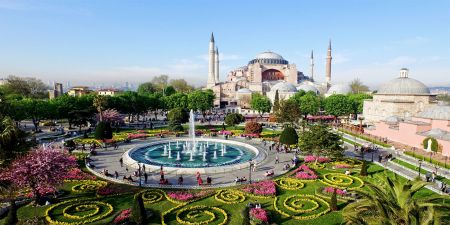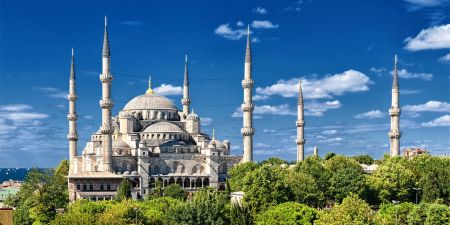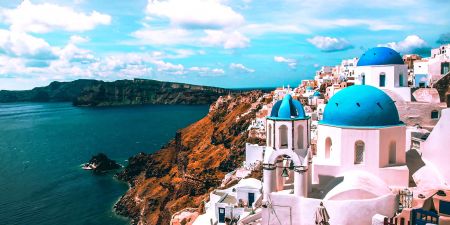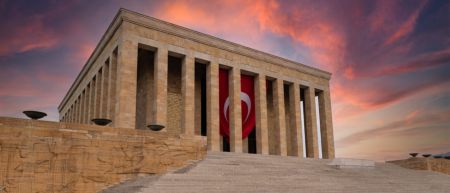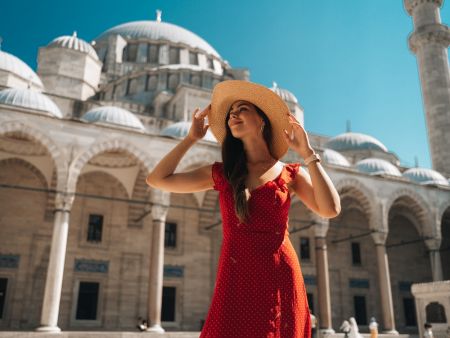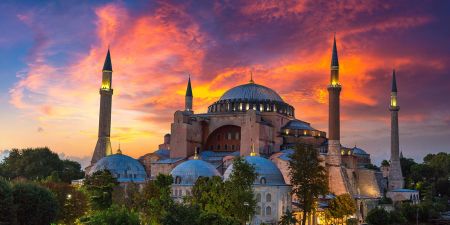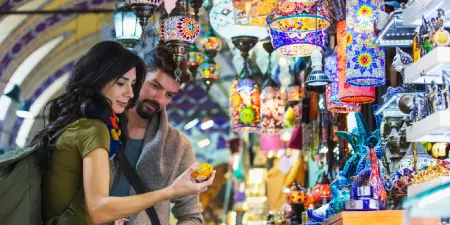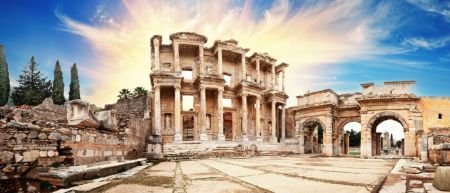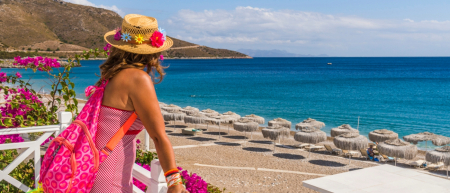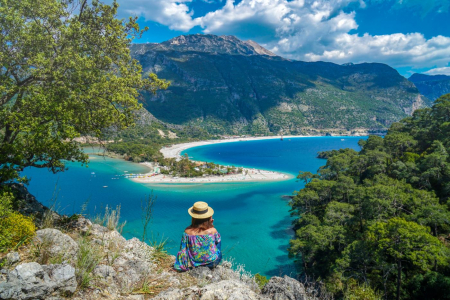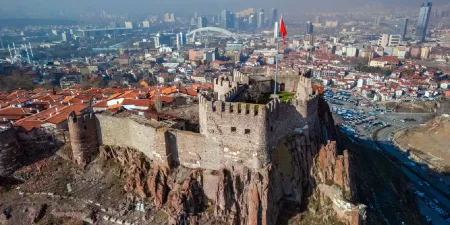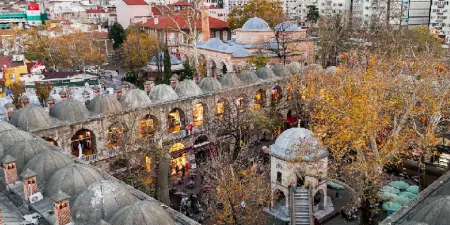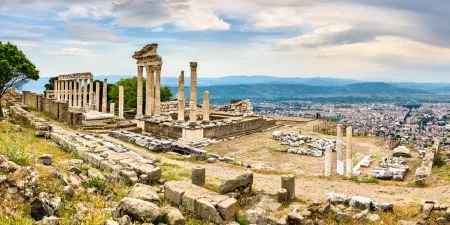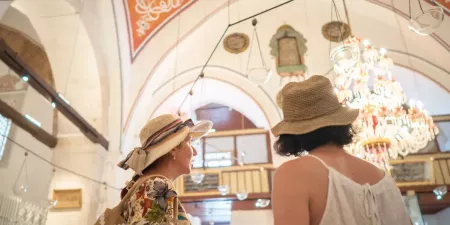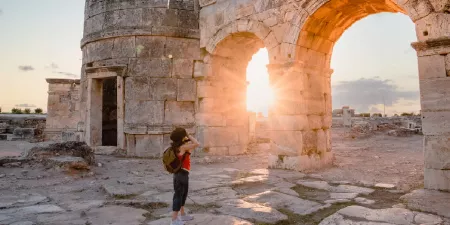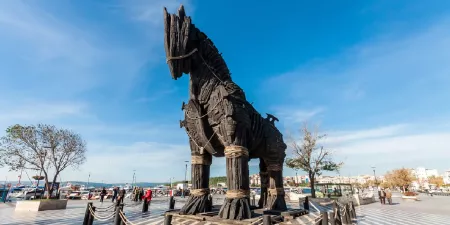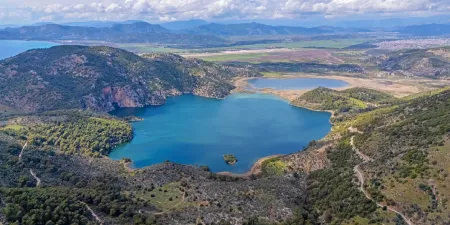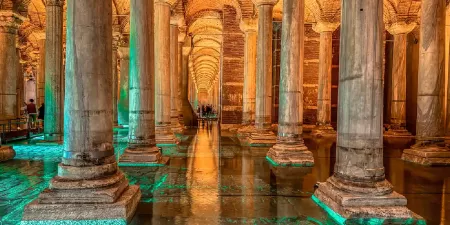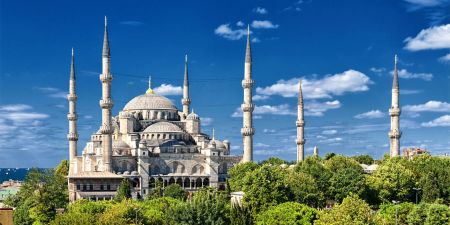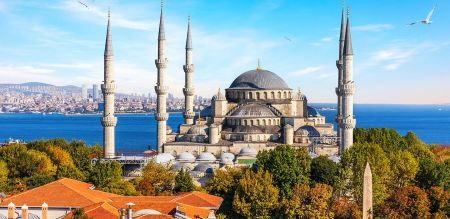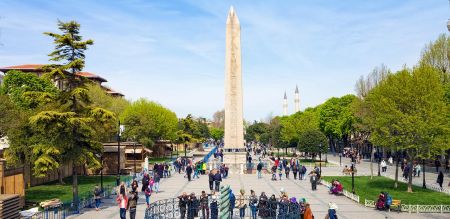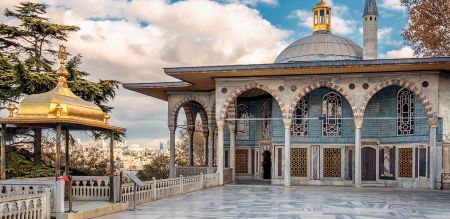Sagalassos Turkey: The Forgotten Ancient City

Sagalassos, Turkey, remained untouched for centuries until archeologists found it in 1985. This remarkable archeological site dates back to 8000 BCE when the first human settlements appeared, though the ancient city remained forgotten after people abandoned it in the 14th century.
The ancient city of Sagalassos thrived 1,750 meters above sea level. The city became a major export hub for pottery and agricultural products. The magnificent Antonine Fountain, constructed between 160-180 AD during Emperor Marcus Aurelius' reign, stands among other remarkable structures that represent humanity's shared heritage.
Alexander the Great's conquest in 333 BC brought Hellenistic influence to the city. This influence created an architectural and cultural legacy that continues to fascinate modern visitors. The forgotten city lies within Burdur's borders and provides a unique window into an ancient world preserved through time.
Sagalassos is widely considered the “first city of Pisidia.” Thanks to its strong relationship with Rome, its wealth, and its impressive urban layout, the city became the most prominent settlement in the region during the Roman period.
The journey to Sagalassos: first impressions
The unique experience to Sagalassos starts with a beautiful drive about 100 km north of Antalya, between Burdur and Isparta provinces. The trip itself adds magic to Sagalassos's experience - a perfect preview of ancient wonders ahead.
Driving through Ağlasun and the Taurus Mountains
The Taurus Mountains' winding roads showcase stunning panoramic views of valleys around. You can reach here in about two hours from Antalya through mountain terrain. A divided highway connects Antalya to Ağlasun, which makes the original drive comfortable and available.
The final 7 km climb begins at Ağlasun town. This stretch has some hairpin turns but rewards you with valley views that stretch far below. The mountain air feels crisp at this height - perfect when you're learning about ruins sitting between 1,450 and 1,700 meters above sea level.
The modern visitor center and facilities
A modern visitor center with a viewing terrace welcomes you on arrival. Design company Tetrazon created the permanent exhibition, graphic design, and applications at the Sagalassos Antique City Visitor Center.
Why the altitude preserved the ruins
The mountains helped keep Sagalassos remarkably intact. The high altitude naturally protected it from looters - who would climb that far just to steal old stones?
A 7th-century earthquake caused landslides that covered parts of the ancient city, which helped preserve what we see today. Many ancient sites lost their stones to newer buildings, but Sagalassos stayed untouched because of its remote mountain location. The city disappeared from records as erosion layers covered it, and growing vegetation helped protect these ruins further.
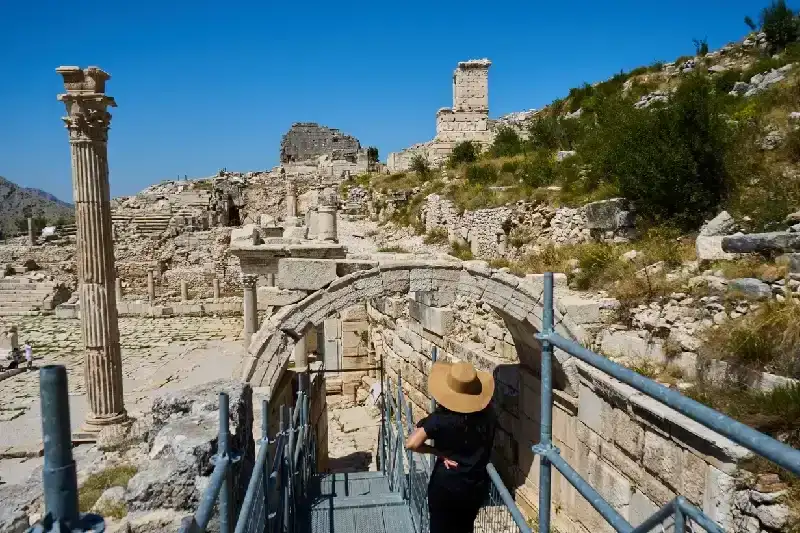
Sagalassos lies in Burdur Province in southwestern Turkey, close to the small town of Ağlasun. It sits high in the Taurus Mountains at over 1,400 meters, giving visitors both ancient ruins and panoramic views of the surrounding valleys.
Exploring the sagalassos ancient city ruins
A visit to the ruins of Sagalassos ancient city transports you back through time. These beautifully preserved structures give visitors a genuine window into the city's prosperous Roman era.
Antonine Fountain: the symbol of Sagalassos
The Antonine Fountain stands as the crown jewel of Sagalassos, Turkey. This magnificent structure spans 28 meters in length and rises 10 meters high, dominating the Upper Agora. Emperor Marcus Aurelius commissioned its construction between 160-180 AD. The fountain became fully functional again in 2010 after extensive restoration work. Water now flows through ancient channels between colored marble columns and detailed statues just as it did 2,000 years ago. Seven different colored stones create stunning light patterns as water touches the Afyon marble.
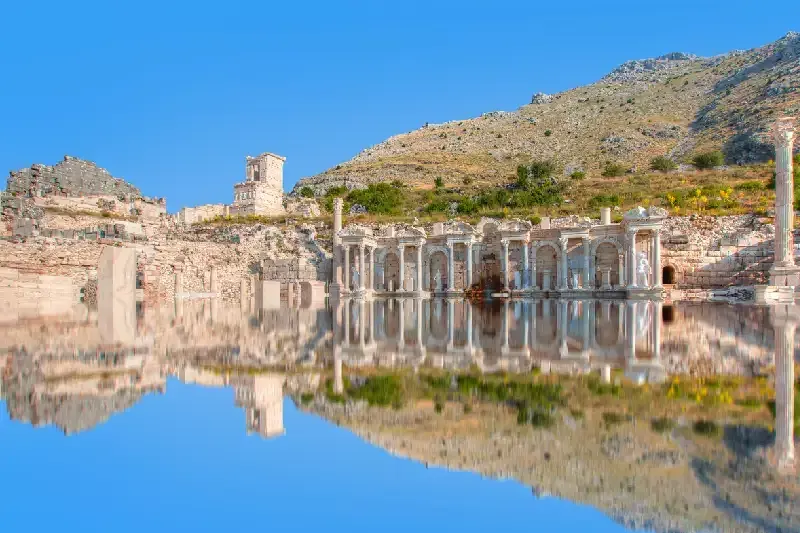
The fountain of Sagalassos is for viewing only. Although the Antonine Nymphaeum still runs with water, it is preserved as part of the ruins, and swimming or touching the water is prohibited.
Customize Your Dream Vacation!
Get in touch with our local experts for an unforgettable journey.
Plan Your Trip
The Heroon and its mysterious figure
The enigmatic Heroon rises 14 meters high just west of the Antonine Fountain. Built in the 1st century AD, this shrine honors an unknown hero or aristocrat - one of the city's enduring mysteries. The structure's base showcases a remarkably preserved frieze depicting dancing nymphs. Two nymphs carry Dionysian symbols, suggesting the honored person might have brought this cult to Sagalassos.
Theater with a view: high-altitude performances
The Roman Theater sits dramatically on the eastern slope, dating back to the 2nd century AD. This semi-circular marvel ranks among the world's highest theaters and once held 9,000 spectators. Visitors can enjoy spectacular panoramic views of mountains and valleys from its ancient seats. Earthquakes in the 6th and 7th centuries damaged the structure, yet much of the original seating survived.
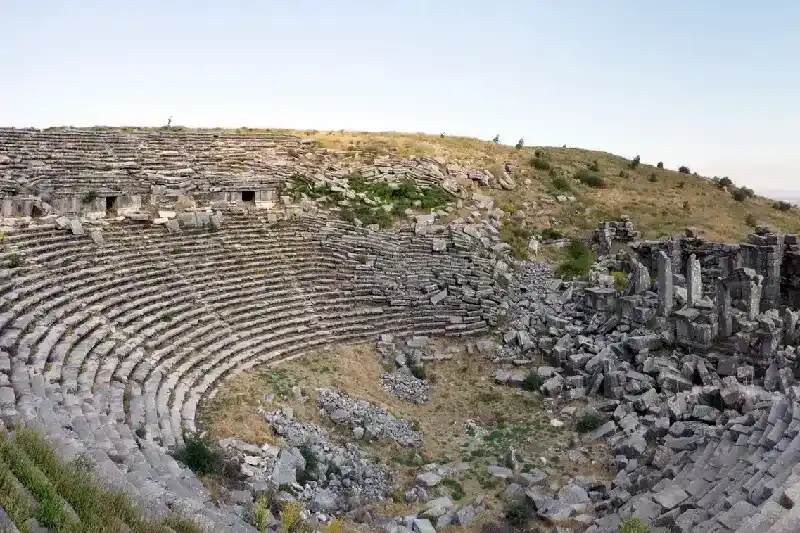
The Upper Agora
The Upper Agora was the civic and social center of Sagalassos, built during the Roman Imperial period on a high terrace overlooking the city. Enclosed by colonnaded porticoes and public buildings, it hosted political, religious, and commercial life. Its most famous feature was the Antonine Nymphaeum, a monumental fountain that supplied water and displayed statues of emperors and gods. Excavations reveal marble pavements and inscriptions, showing the agora’s role as the heart of urban life in ancient Sagalassos. Today, the Upper Agora is a must-see stop on many Turkey tours, offering visitors a glimpse into the grandeur of Roman urban planning.
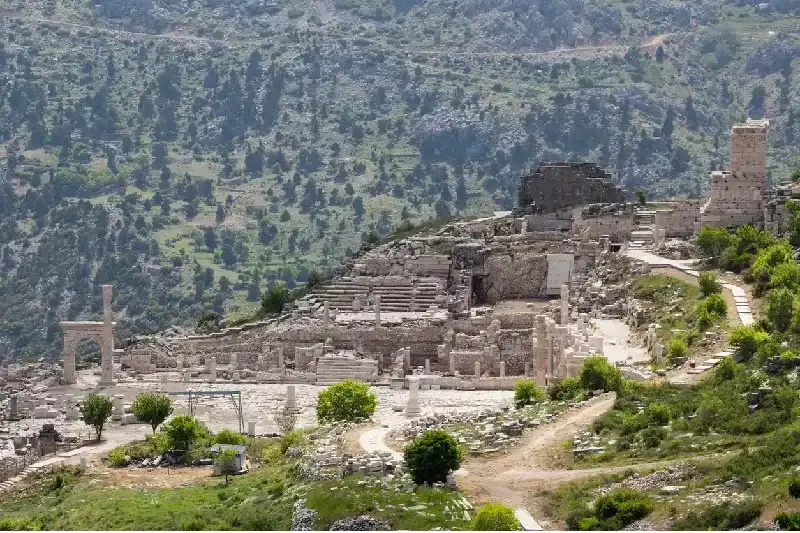
The lesser-known Stadium and its remains
The Stadium lies on the far western edge, dating from the 1st century AD. This less restored area lets visitors use their imagination to picture its past glory. Historical records tell us Christians faced martyrdom here for entertainment before a memorial church rose from the stadium's remains.
Rock tombs and necropolis
Rock tombs dot the surrounding slopes to create the city's necropolis. The Northern Necropolis features distinctive arcosolia - arched indentations carved into rock faces. These Roman Imperial burial chambers held cremated remains, as cremation remained common here until the 3rd century CE. These quiet resting places remind us of the people who once called Sagalassos home.
Stories behind the stones: what history reveals
The ancient stones of Sagalassos Turkey hold an array of historical events that shaped the city through centuries. These silent ruins tell powerful stories of conquest, wealth, and eventual downfall.
The Roman and Hellenistic influence
Alexander the Great seized Sagalassos in 333 BCE during his Persian campaign. His death led to multiple power shifts among his successors. The local population accepted new ideas from Hellenic culture faster than expected. The city grew three times its size within a century after Emperor Augustus brought it into the Roman Empire in 25 BCE. Local leaders built their wealth through farming and pottery making, which created a unique eastern variety of sigillata pottery.
The role of Marcus Aurelius and Hadrian
Emperor Hadrian lifted Sagalassos' importance by naming it the "first city of Pisidia" and making it the imperial cult worship center. This new status brought thousands to the city's festivals and games (Klareia). Hadrian started huge building projects across the city. Marcus Aurelius, who came after him, finished several major buildings including the Roman Baths and the Macellum between the Lower and Upper Agora. The beautiful Antonine Fountain, which you can still see today, was built during his rule between 160-180 AD.
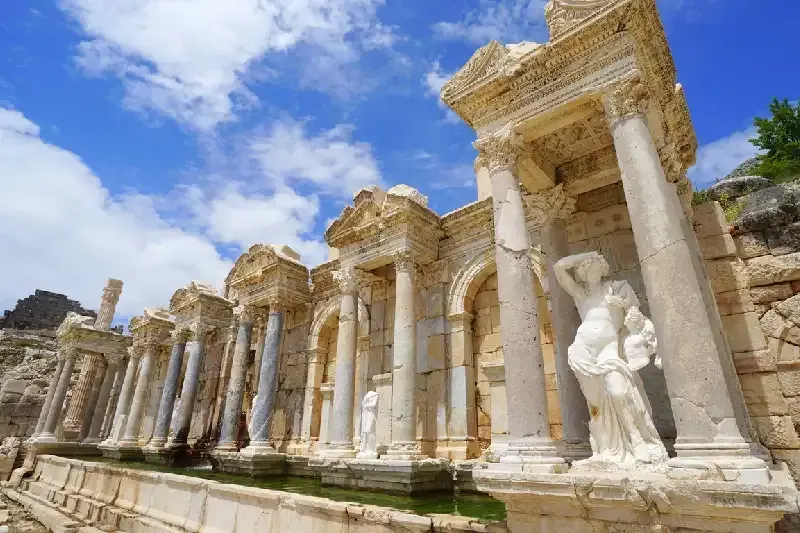
Tips for visiting Sagalassos today
A well-planned trip to Sagalassos helps you make the most of your visit. This piece provides essential tips that will enhance your time at this remarkable ancient city.
Best time to visit and weather conditions
The most comfortable time to visit Sagalassos, Turkey spans spring (April-June) and autumn (September-November). These seasons have ideal temperatures that make it perfect to walk through the extensive ruins. The summer heat can be intense and affects midday visits. The mountainous site gets snow in winter, which sometimes restricts access. Summer visitors should plan their trips early in the morning or late afternoon to beat the heat.
What to bring and wear
The uneven and steep terrain makes sturdy walking shoes a must-have. Your packing list should include:
- Extra water bottles, particularly in warm weather
- Food and snacks since the only option is a café by the ticket office
- A waterproof jacket for visits outside summer months
- Sun protection gear due to the high altitude

The best times are spring and autumn, when the weather is mild and the mountain setting is especially beautiful. Summers can be hot, while winters are cold and sometimes snowy, which may limit access.
Entrance Fees
The entrance costs 25 Turkish lira (about £1.25 when reported) - great value for this most important archeological site. You can also use your Müze Kart (museum card) to enter.
Nearby attractions and Burdur Museum
The Burdur Archeological Museum sits just a short drive from Sagalassos and deserves your attention. This award-winning facility houses significant finds from the site's excavations. The museum's collection expresses its importance through monumental portrait heads of Emperors Hadrian and Marcus Aurelius, found during 2007-2008 excavations. You can easily spend 1-2 hours here, which makes it a great addition to your Sagalassos day trip.
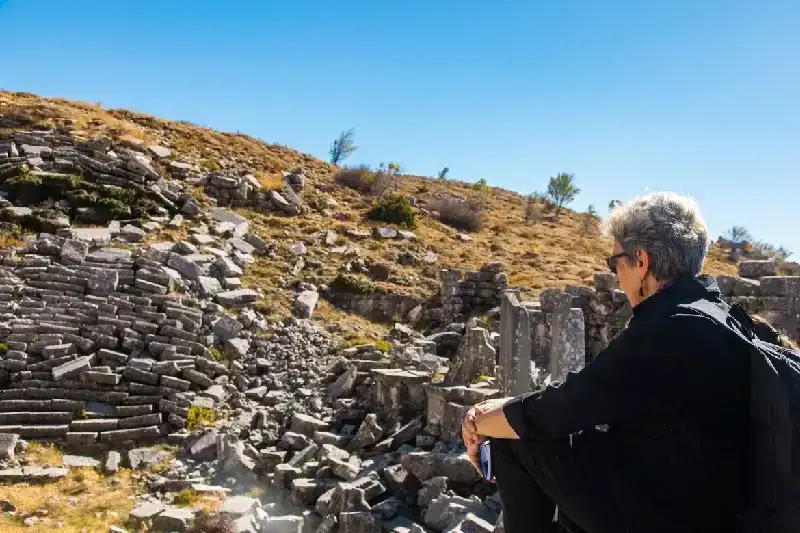
Entry to Sagalassos costs 25 TL, making it one of the best-value archaeological sites in Turkey. Holders of the Müze Kart (Museum Card) can enter for free.
Sagalassos stands as proof of human ingenuity and resilience through the ages. Sagalassos remains a hidden gem among Turkey's archeological treasures. Its remote location will give a less crowded, more peaceful experience than popular ancient sites. Time forgot this extraordinary city, but its mountain sanctuary protected it. Now it welcomes those ready to make the trip. Past and present meet at Sagalassos, where you can walk the same paths as Alexander's armies, Roman merchants, and countless others who shaped this remarkable place through thousands of years of human history. Many Turkey Tour Packages include a stop here, allowing travelers to connect the ancient ruins with the remarkable artifacts preserved in the museum.

